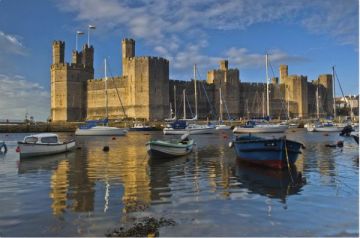The earliest known period of settlement of what is now Scotland took place in the Middle Stone Age, or Mesolithic period, about 7,000 BCE. The Mesolithic inhabitants were hunters and fishermen, and they lived almost entirely along the coast of western Scotland and the islands of the Hebrides.
The coastal areas were much better suited to sustaining indigent tribes, for they could find a ready supply of shellfish and catch fish in shallow waters by using spears. Inland, the land became swampy and heavily forested, so they only really ventured far from the coast when they were in pursuit of heavy game.
Initially, the Mesolithic inhabitants used tools of bone made from antlers of deer and other large game animals. By 6,000 BCE they began to use flint tools as well. These flint blades were initially used for scraping hides, but later, large blades were fashioned to cut wood.
Mesolithic life was one of constant change. There were no permanent settlements; rather, groups of people moved frequently in search of game, following the food supply. In time, these groups may have returned to favoured hunting grounds again and again, but their dwelling was temporary, easily taken down and transported, or simply abandoned.
Much of what we know about Mesolithic life comes from spoil heaps; rubbish dumps the people left behind. Shell mounds and middens have been found along the west coast, in Fife, and in the estuaries of the Dee and Forth. On Jura, three stone rings were found at Lussa Wood. These are thought to be the oldest stone structures in Scotland and may have provided a frame for stretched hides.


